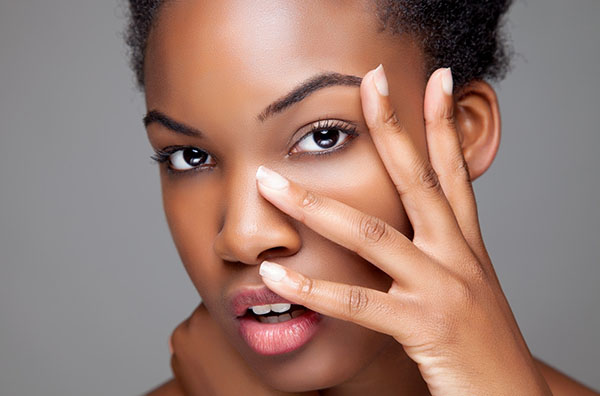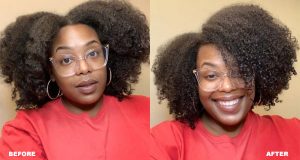By Jean Pierre
Pride Health Columnist
Hyperpigmentation is the darkening of an area of the skin where there is an over production of melanin relative to the surrounding skin. The cause can be hormonal changes, excessive sun exposure, injury, acne or other medical conditions.
Over production of melanin can be the result of an abnormally high concentration of melanocytes in a specific area of the skin. This is evident by an increase level of melanin in the epidermal layer of the skin.
During pregnancy, over production of melanin due to hormonal changes can produce hyperpigmentation on the face (pregnancy mask) and on the abdomen (linea nigra). This condition is known as Chloasma and sometimes referred to as Melasma.
Hyperpigmentation in these affected areas of the body generally disappears without treatment after pregnancy. Birth control pills can sometimes cause hyperpigmentation of the skin. Types of injuries that may cause hyperpigmentation of the skin are:
A rash
Any eruption on the skin can cause hyperpigmentation which is more evident on black skin.
Picking of pimples
Constant picking of pimples on the skin can produce scarring and hyperpigmentation.
Tweezing and removing ingrown hairs under the skin
Regular tweezing and improper removal of ingrown hairs from the skin can produce hyperpigmentation and sometimes keloid scarring.
Acne
Moderate to severe acne condition can lead to long standing hyperpigmentation and scarring of the skin.
Use of harsh depilatories for hair removal
Due to the sensitivity of black skin regular use of depilatories for removal of unwanted body hair can result in hyperpigmentation in the area where hair is removed.
Bruising
Bruising of the skin can result in hyperpigmentation of the area and formation of keloid scars.
Constant Friction
Constant friction of the skin, even though gentle, can sometimes cause hyperpigmentation of the area and even lead to the formation of keloid scars.
Some examples of gentle constant friction to the skin which can produce hyperpigmentation are as follows:
- Wearing ill fitted eye glasses that rubs on both sides of the nose will in time produce hyperpigmentation of the area.
- Wearing an ill-fitted bra that continually rubs on the shoulder, even in small busted women, can produce hyperpigmentation on the shoulders in the area that the strap rests.
- Kneeling when cleaning floors will produce hyperpigmentation of both knees.
- Resting your elbows on your desk daily will in time produce hyperpigmentation of the elbows.
- Labels and hooks on bras that rub against the skin can produce hyperpigmentation of the area.
- Continually touching any area on the body, for example, the nose or chin can produce hyperpigmentation of the area.
- Daily shaving that causes constant friction on the skin can produce hyperpigmentation in some individuals.
Summary
Black skin, due to its high melanin content, does have a high tendency to become hyperpigmented whenever there is damage to the skin. When hyperpigmentation of the skin occurs the skin tone is no longer even, and individuals with this problem generally seek treatment to even out their skin tone.
During these treatments, it is highly recommended that a sun protection cream is applied to the treated areas. One should also be careful not to confuse bleaching of the skin with gentle correction of hyper-pigmentation, which will return the skin to an even tone, but not cause excessive lightening of the skin (hypo-pigmentation).
Some agents on the market that are used in the removal of pigments from the skin, can permanently damage the skin by preventing the melanocytes from producing melanin in the area being treated or bleached.
Some safe and natural agents that are used in formulations for correcting and even skin tone are bilberry extract, kojic acid, glycolic acid and other forms of alpha hydroxyl acids.
Cleopatra regularly soaked in a bath tub filled with milk (lactic acid) to maintain her flawless milky white complexion.
Jean Pierre is a Registered Nurse and an experienced Aesthetician. She has dedicated her professional life to the pursuit of excellence in specialized skin care products and spa service. She is the president and creator of the Obsidian Skin Care System and founder of the popular Jean Pierre Aesthetics and Spa. A community leader and inspirational entrepreneur, Jean Pierre, has been cited for numerous awards including the African Canadian Achievement Award for Business, The Toronto Sun’s Woman on the Move Award and the Harry Jerome Award for Excellence in Business.
 Pride News Canada's Leader In African Canadian & Caribbean News, Views & Lifestyle
Pride News Canada's Leader In African Canadian & Caribbean News, Views & Lifestyle






What would make you think Cleopatra’s complexion was “milky white”? Really?
The article was good until they got to that part.